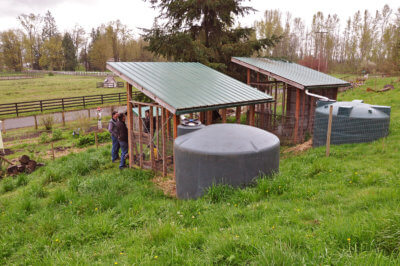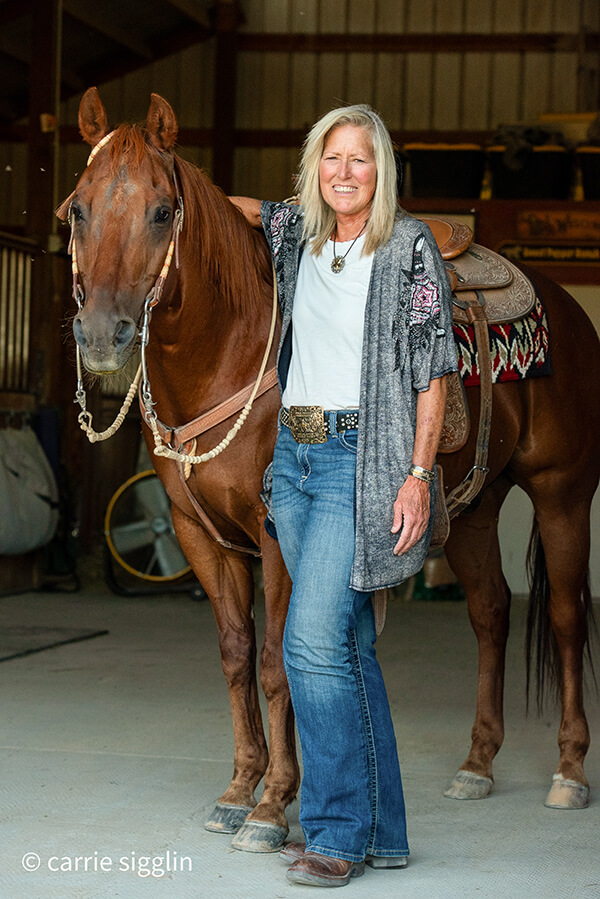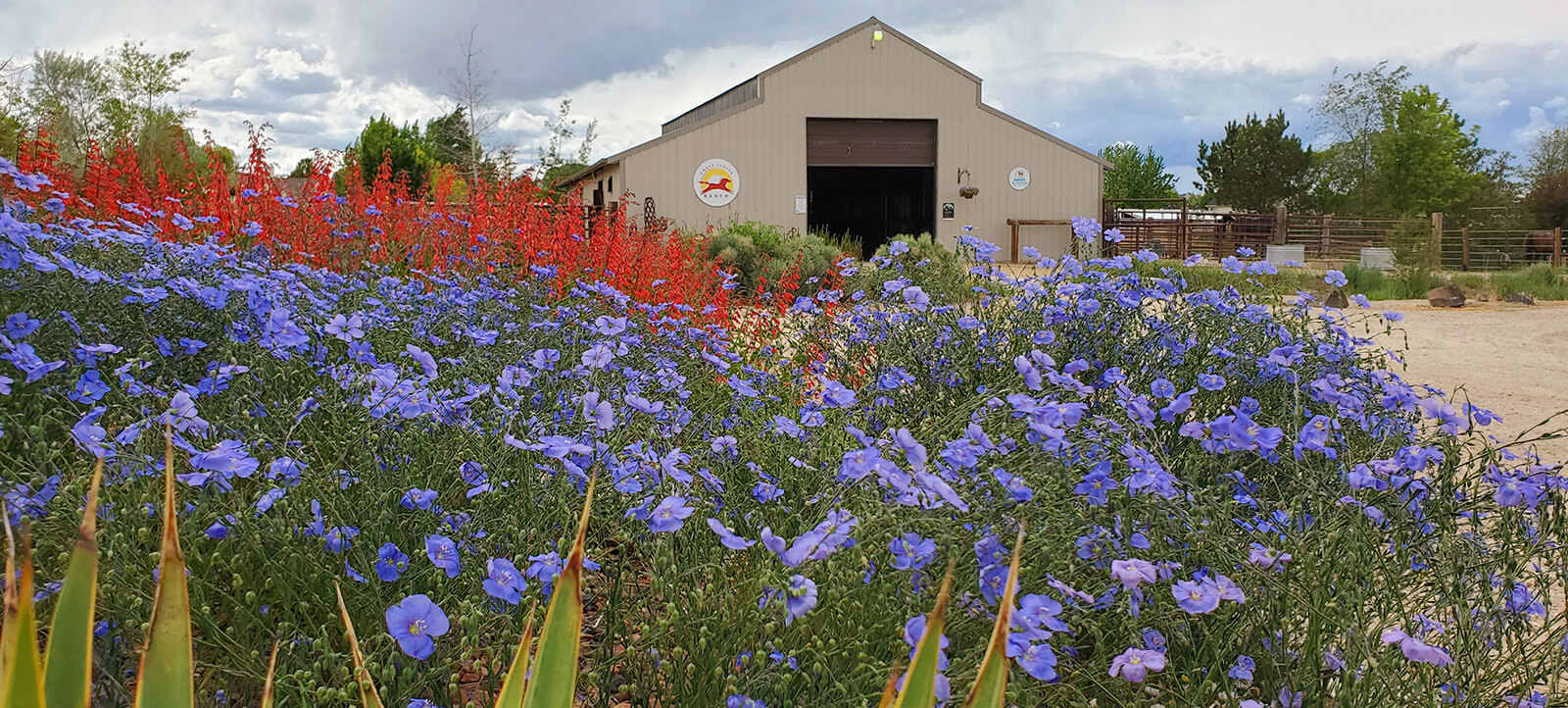If you live out West and manage horses on your property, you are undoubtedly pondering ways to reduce and conserve water. Many western states are suffering from prolonged drought conditions; some areas are even experiencing drinking water issues. With climate change looming, we each need to do what we can to make adjustments in our water-use practices.
Here are some tips for conserving water on your horse property throughout the summer—and beyond.
Caring for Landscaping
Use native plants whenever possible. Native plants have evolved over thousands of years in a particular region. They’ve adapted to the geography, hydrology, and climate and have co-evolved with animals, fungi, and microbes. What that means for us is these plants are disease tolerant, require less care and no pesticides or fertilizers, they cost less, and once established they require no watering.
Apply compost. If you have been composting your horse manure and spreading it on your pastures, landscape, lawn, and gardens, your plants are better prepared for dry weather than most. Soils amended with compost absorb and retain moisture and the result is that your pastures will fare better in dry weather.
Use mulch. Use mulch (wood chips, compost, bark, dry grass clippings, etc.) around landscaping plants to reduce evaporation on the soil surface. Straight stall waste (mostly shavings and little manure and urine) can also be utilized directly as mulch. NOTE: Fire prone areas should not use anything combustible and instead use rock mulch, i.e., gravel products.
Water deeply. Fortunately, most native landscapes require little watering once plantings are well established (this takes about one to three years). Watering deeply but less often encourages roots to grow deeper. Frequent watering in small amounts encourages plants to keep roots shallow, resulting in poor growth and disease.
Water efficiently. Water in the evening hours when evaporation is less likely. For maximum efficiency, use drip irrigation, micro-sprays, or soaker hoses on gardens, crops, and plants. These systems apply water directly to the soil with minimal evaporation or runoff. To moisten the top 6 to 12 inches of soil, a soaker hose (which sweats water along its length) may need to be run for about 30 to 40 minutes in loamy soils. Sandy soils may need less, clay soils more. Soaker hoses only save water if they are used for the correct length of time.
Pasture Management and Irrigation Tips
Apply compost (see also above). Adding compost to your pastures will be one of your best strategies for combating drought. The fine organics in compost act like small sponges to hold moisture, helping your pastures survive dry spells better.
Avoid overgrazing. The golden rule of grazing is to never allow grass to be grazed shorter than three inches. This ensures that the grass will have enough reserves to permit rapid regrowth. The three inches of leafy material is also needed for the biofiltration of nutrients, sediments, and chemicals—and keeping them from running off and contaminating nearby water bodies. Compaction of the soil makes water infiltration and root growth difficult resulting in runoff of water. It also increases feed costs because of the reduced pasture productivity and potentially increased vet bills if your horse eats toxic weeds.
Rotationally graze. Dividing a pasture area into smaller areas and rotating horses through these areas encourages horses to graze more evenly, avoids overgrazing, and it guarantees fresh grass for a longer time during the growing season. Once horses have grazed most of the grass in a pasture down to three or four inches, rotate them on to the next pasture. You can put horses back on a pasture when the grass has regrown to about 6 to 8 inches.
Irrigate pastures to a depth of 5 to 6 inches. You can test this by pushing a shovel or a long handle screwdriver into the ground. If it slides in easily, no watering is needed. If the ground is hard and the screwdriver cannot work its way in, then irrigation is needed.
Let your plants tell you when they need water. You will notice a slight color change in the overall pasture from deep green to gray or bluish-green. You may notice “foot printing” which is when walking across the pasture leaves footsteps in the grass which don’t rebound.
Go as long as possible between waterings without making the plants go into water stress. Deep infrequent irrigation will mean deep, strong roots.
Stock Watering Systems
Divert roof runoff. To conserve water, devise a system to capture the rainwater from barn roof downspouts and divert it to stock watering tanks. You can do this purchasing equipment, or you may be able to design something yourself. (The practice of reusing roof runoff is only recommended for buildings with fiberglass or metal roofs and not for composite or shake roofs).
Automatic watering. Automatic watering systems conserve water because they only use as much water as a horse can drink. Look for systems with moderately sized water pan, five gallons or less. A large one will get dirty and full of algae quickly, requiring you to clean it frequently. Another advantage to an automatic waterer is that water is circulating and not stagnant so it will not provide mosquito habitat.
Rain Barrels and Cisterns

Rain barrels and cisterns are another great way to save water. Rain barrels are designed to capture and store rainwater coming off a roof and are usually attached to a downspout. They consist of a storage container (usually plastic), a system for diverting downspout water into the barrel, and an overflow that returns to the downspout or diverts water safely away from the house to percolate into the soil. Cisterns are above or below ground water storage systems designed to serve large portions of the water needs of a building or landscape.
Recharge ground water through:
- Pervious surfaces – like gravel footing or turf tiles (either cement or plastic) which add structure to the soil base but still allow plants to grow and water to drain through, recharging ground water. Use pervious surfaces wherever possible, like in driveways, parking areas, walkways, or other heavy use areas.
- Outdoor wash racks – which recharge groundwater versus wash water flowing into a public sewer system.
- Swales and buffers of plants – preferably using native plants (which naturally require less water).
Check out the Horses for Clean Water website for information on online classes, private consultations, tip sheets, and other resources for horse keeping and land management. Visit the Sweet Pepper Ranch website for info on our upcoming spectacular 3 ½ day Sweet Pepper Ranch Cowgirl Retreat, August 26 – 29, 2021 which includes ranch riding, yoga, meditation, lectures, demos, gourmet meals, pool time – and more!
See this article in the August 2021 online edition:

Alayne Blickle began in the 1990’s as a pioneer in water conservation and natural resources conservation by creating the entrepreneurial consulting business, Horses for Clean Water, an award-winning internationally acclaimed education program that looks for horse-healthy, nature-based solutions to land management challenges. She continues this work today partnering with agencies, organizations, and horse owners throughout North America and worldwide. She is a regularly contributing writer and photojournalist to several equine publications.
Alayne lives with her horse trainer husband, Matt Livengood, in southwestern Idaho where they raise and train AQHA horses and mustangs on their eco-friendly horse ranch. Contact her through the Horses for Clean Water website or through their ranch website Sweet Pepper Ranch.
For more information contact Alayne at alayne@horsesforcleanwater.com or 206-909-0225.


